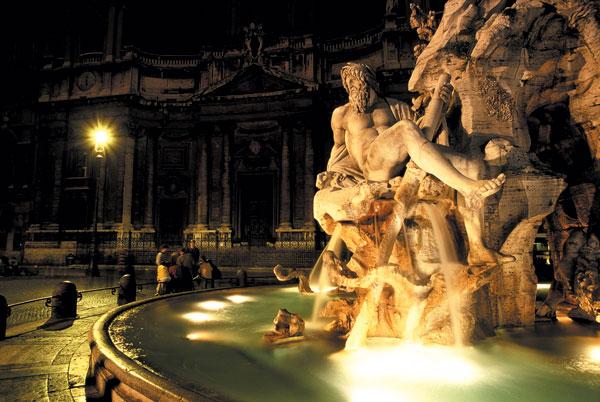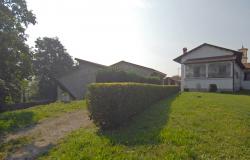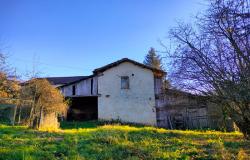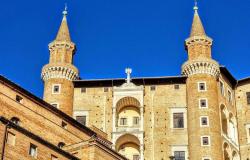The Renaissance masters knew the value of a good background. From Botticelli to Michelangelo, Piero della Francesca to Tintoretto, their world was one of classical piazzas, sumptuous palaces and sturdy fortresses set amongst rolling hills crowned with dark cypress trees. Quintessential images of the perfect romantic landscape, these images have endured the centuries, only to be given new form today by the masters of Hollywood. And when the lights go up, it’s not just moviebuffs waiting in their seats through the credits, it’s Italophiles like you and I mentally storing away the scenery to discover on future holidays. Roman Holidays
Hollywood’s cinematic love affair with Italy started back in the 50s with Roman Holiday, made when a post-war Italian film industry based in Rome was attracting American studios with its new and evocative locations. The ultimate tourist movie, this was a whirlwind jaunt around Rome’s major monuments, from the Spanish Steps to Bernini’s grand Piazza Navona (below), with Gregory Peck and Audrey Hepburn as tour guides. And such was its appeal that anyone visiting the little Basilica of Santa Maria in Cosmedin must surely recall this film as they hesitantly thrust their hand into the gaping stone jaws of the Bocca della Verità (right).
The piazzas of the Eternal City became a magnet for moviemakers, as did its countless fountains; remember that Cinemascopic opening to Three Coins in the Fountain, or Anita Ekberg’s watery dip in the Trevi Fountain in La Dolce Vita? Even Kirk Douglas strolled the fashionable Via Veneto with Dahlia Lavi on his arm in Two Weeks in Another Town. Seduced by the scenery, audiences were flocking to Italy looking for that same dolce vita.
Searching for Shakespeare
Rome’s cafè life and extravagant Baroque monuments might have suited 50s romantic comedies, but the wave of historical and Shakespearean films that epitomised the 60s and 70s took movie-makers out of the City of Fountains in search of authentic medieval locations. Tuscany’s rich architectural history, with its unchanged town centres and hilltop villages, was to prove an asset that directors were quick to exploit.
Drawing on his architectural background, the Florentine, Franco Zeffirelli, proved a master at assembling diverse locations into a unified whole, as his Oscar-winning Romeo and Juliet was to show. The harmonious collection of 15th-century Renaissance buildings grouped around the Piazza Pio II in the little Tuscan hilltown of Pienza might have formed the central backdrop for his feuding families, but fans intent on visiting the locations were soon in trouble. In recreating medieval Verona, Zefirelli constantly moved his star-crossed lovers around Italy. Juliet’s house, set amongst the gardens and arcaded courtyard of Pienza’s Palazzo Piccolomini, gave way to the ancient and austere stone streets of Umbrian Gubbio for the duel scenes. Friar Lawrence married them in the beautiful 11th-century church of San Pietro in Tuscania near Rome, before finally they met their deaths in the crypt below.
Similar sleights of hand saw Todi’s 13th-century Piazza del Popolo (upper right), one of the most perfect of Umbria’s medieval squares, intercut with Roman locations to become St Peter’s for the clash between Pope Julius II and Michelangelo over the Sistine Chapel in The Agony and the Ecstasy. Zeffirelli was to repeat the trick in Brother Sun Sister Moon, casting San Gimignano’s medieval Manhattan skyline against the real Assisi to portray St Francis’ wealthy birthplace. Ironically, the Arab-influenced cathedral at Monreale in Sicily was to stand in for the Vatican.
Looking for a View
Romantic period dramas kept Tuscany’s cinematic appeal and locations busy through the 80s and into the 90s. Merchant and Ivory were to film here regularly, most famously in Florence for the classic Room With a View, perhaps the quintessential if somewhat stereotypical English view of Italy.
A major part of the film was both set and filmed amongst the palazzi e monumenti of the Piazza della Signoria and the beautiful Franciscan church of Santa Croce. But the 15th-century Villa di Maiano in nearby Fiesole was to provide the interiors of the Pensione Bertolini, although not the view. This came from the windows of the Hotel Quisisana near the Ponte Vecchio, unfortunately hit a few years later by the terrorist bomb at the Uffizi. The locations were to win the film an Oscar for ‘Best Scenery’.
Merchant and Ivory visited again, but this time to nearby San Gimignano which performed stalwart service as EM Forster’s Monteriano in Where Angels Fear to Tread. The ubiquitous Zeffirelli also came here for Tea With Mussolini, shot largely in the little Romanesque duomo and its adjoining piazzas.
Despite the ministrations of the recently formed Tuscan Film Office, Florence has played host to few film-makers over the years. A recent director to call on its unique architectural beauty was Englishman Ridley Scott, who courted local condemnation by shooting one of the more macabre scenes from Hannibal at the Palazzo Vecchio (centre right). Late night strollers in the Piazza della Signoria were greeted by the horrific sight of a stuntman repeatedly plunging towards Michelangelo’s David from its upper windows with a noose around his neck and his entrails around his feet, most likely bought from the nearby 16th-century Mercato Nuovo, the scene for yet another grisly killing. However, despite no doubt its own share of real horrors, the interiors of the Palazzo Vecchio were recreated in a disused warehouse.
Venetian Morbidity
With a few notable exceptions, even fewer films have been set in Venice. Katherine Hepburn dated Rossano Brazzi here in Summertime back in those golden 50s, but only Death in Venice, Don’t Look Now, (where Donald Sutherland and Julie Christie search the canals of Venice for a psychic reunion with their dead child) and Henry James’ Wings of the Dove seemed to capture the melancholic air that haunts that city, setting their obsessive heroes in a dark and introspective world of dank alleys and echoing canals. Devoted fans still seek out cinematic landmarks such as the fading Hotel des Bains on the Lido, where Thomas Mann’s doomed hero awaited his end, or wander nervously along the Calle di Mezzo in search of the rusting iron gates that mark the entrance to the Palazzo Grimani, hoping for a flash of red where Donald Sutherland drew his last gurgling breath.
But all is not dark here – far from it. Who can forget James Bond driving a motorised gondola across San Marco, or Indiana Jones, escaping from catacombs under a Venetian church, emerging wet and dishevelled from a manhole into a cafè near Accademia. Don’t be tempted to search the Campo San Barnaba for that cafè though – like the church interior, it doesn’t exist. And the ensuing boat chase might appear to be still in Venice but is in reality Tilbury Docks! Who said the camera doesn’t lie?
Faking It
In 1994 Norman Jewison brought Rome full circle with Only You, setting his lovers’ first meeting in the ancient cobbled streets of Trastavere, its most picturesque neighbourhood. Perhaps in homage to their 50s predecessors, their romantic moonlit stroll takes them over the bridges of Isola Tiberna to Santa Maria and that Bocca. Unfortunately, Robert Downey must do his wonderful Gregory Peck impersonation here with a replica stone – and indeed a mile away at a small church off the Via Condotti – due to another bomb just days before at the original location. But such is the suggestion and skill of the moviemakers, and of course the magic of those wonderful locations, that nobody noticed. Did you?














